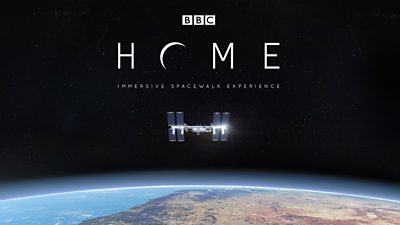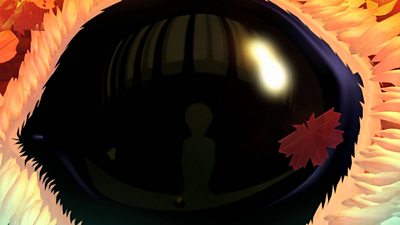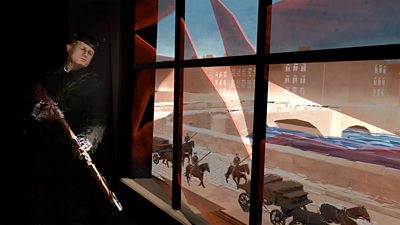
I want to share some insight from a series of projects the results of which we鈥檝e released this week, and to explain why this is an important technology for the 成人快手 to explore. In the videos below I talk about the context of our work in VR, the areas we鈥檙e exploring and the opportunities for some of to solve the challenges of VR. In this post I want to summarise the work and why we have chosen to share a slate of these projects this summer.
In 2016, 360 degree video and Virtual Reality has started to make steps towards maturity. Google Cardboard is a low cost way of making your mobile phone into a simple headset that costs a few pounds. and now support playing 360 video through your phone or Cardboard.
In the US, Samsung has given away with their latest phones, and there are a range of high-end headsets expected to launch this year: , , and .
New mediums come along rarely, and those that stand the test of time are rarer still. There was , and . The 成人快手 helped pioneer and develop these emerging mediums for UK audiences and the creative industries, and it鈥檚 in that tradition we are exploring 360 video and VR now, in collaboration with the industry. This will help inform any strategy the 成人快手 may need in future.
- from day
360 video and VR are emerging media the 成人快手 needs to explore, in collaboration with the industry. Our motive with these technologies is the same for the others we are researching 鈥� how might they improve the 成人快手鈥檚 ability to better inform, educate and entertain.
means that we can test the technology and editorial potential of VR and 360 video, while measuring audience appetite for these experiences very quickly.
Taster has showcased the work of teams from some of the 成人快手鈥檚 best loved programmes and genres: , and have all had the 360 video treatment and been published for people to try, rate and share. Just this week we finished an experimental and from today audiences can get Queen鈥檚 eye view of Trooping the Colour.
You can read more about how 成人快手 TV brands are experimenting with 360 video and immersive technologies , Editorial Lead for 成人快手 Taster.
However, we鈥檝e also been working on the first true VR pieces created within the 成人快手. As to the difference between 360 video and VR, while there are variations, the main distinction is that true virtual reality worlds are interactive, in that they can react to some degree to what you do, whether that鈥檚 where you look, where you move your hands, or even how fast your heart beats.
Truly interactive VR video is in its infancy and can be expensive to create, but total or partial animation or CGI can be used very effectively and efficiently, while other production techniques may yet emerge or become more accessible over time. All of our true VR experiments seek to address different challenges that will provide invaluable insights for the organisation now and in the future.
For example, that uses real stories of refugees as the basis for an animated virtual experience, helping to give audiences a sense of presence by placing them at the heart of the story, and with technology allowing interactive eye-contact between them and the characters. This project was built for the Oculus Rift VR headset.

is a fairy tale created in partnership with , which uses R&D technology to create incredibly realistic 3D sound. The dynamic binaural soundtrack for and how this can be used in 360 degree environments. It was also built for the Oculus Rift VR headset.
takes audiences on a tour of Rome's magnificent Pantheon, testing both how we can re-use assets created for broadcast (Alexander Armstrong's 成人快手1 documentary 鈥樷€�) and the use of standard web technologies to deliver VR to a wider audience. This project was built for viewing in a web browser, ideally through smartphones and a low-cost mobile VR headset like Cardboard.

We have also been assisting colleagues from 成人快手 Learning who produced 鈥樷€� with Crossover Labs and VRTOV. It鈥檚 a ground-breaking new form of history documentary making, exploring how VR might create a completely new way for people to engage with the past 鈥� by living through a protagonist鈥檚 memories and perceiving events from their perspective. This project was built for the Oculus Rift and Gear VR headsets.While 鈥槼扇丝焓� 鈥� A VR Spacewalk鈥� is a collaboration between 成人快手 Science, 成人快手 Learning, 成人快手 Digital Storytelling and Rewind, helping us learn from some of the most advanced visual effects currently available in VR, combined with spatial audio, to explore its potential for factual and science content. It forms part 成人快手 Learning鈥檚 ongoing mission to fire the imaginations of the next generation of scientists and explorers. This project was built for the HTC Vive VR headset.We are learning a great deal from these experiments about production techniques and workflows, user experience, and the technology of capture and distribution, but above all we want to know how our audience feels about these new forms of storytelling. Please do try these and forthcoming pilots, and use the Taster rating and feedback to tell us what you think.
- Our own Graham Thomas now talking about some of the production challenges of Virtual Reality 鈥� 成人快手 R&D (@成人快手RD)
- -
- More on Virtual Reality and 360 Video:
- from day
-

Immersive and Interactive Content section
IIC section is a group of around 25 researchers, investigating ways of capturing and creating new kinds of audio-visual content, with a particular focus on immersion and interactivity.
Topics
Search by Tag:
- Tagged with Blog Blog
- Tagged with Immersion Immersion
- Tagged with Video Video
- Tagged with Production Production
- Tagged with Immersive and Interactive Content Immersive and Interactive Content
